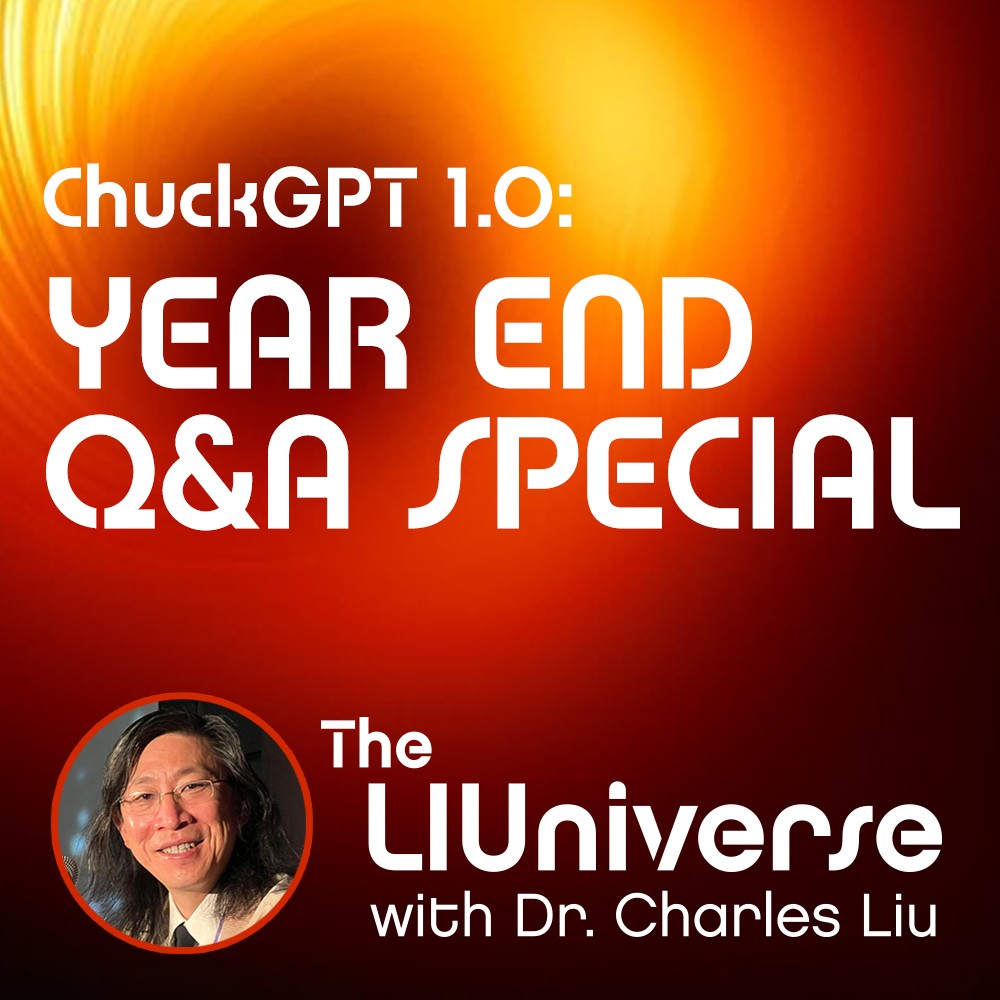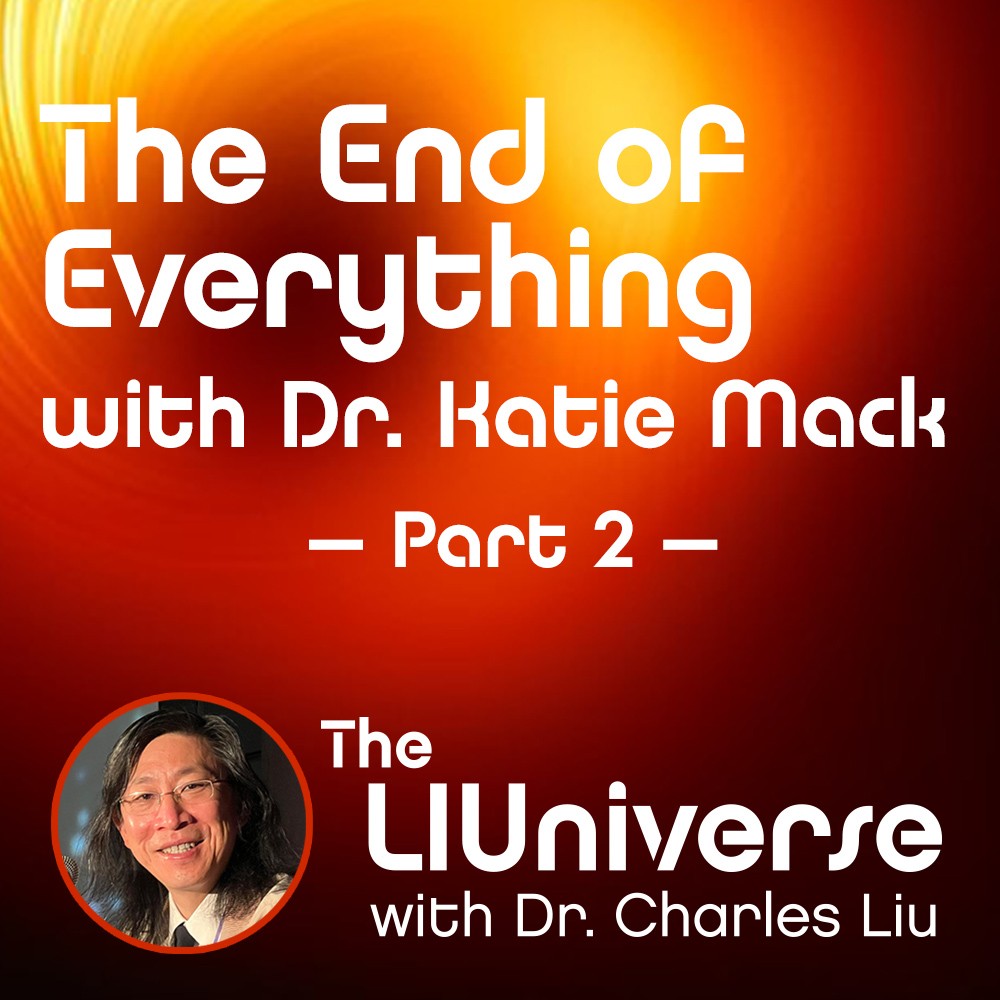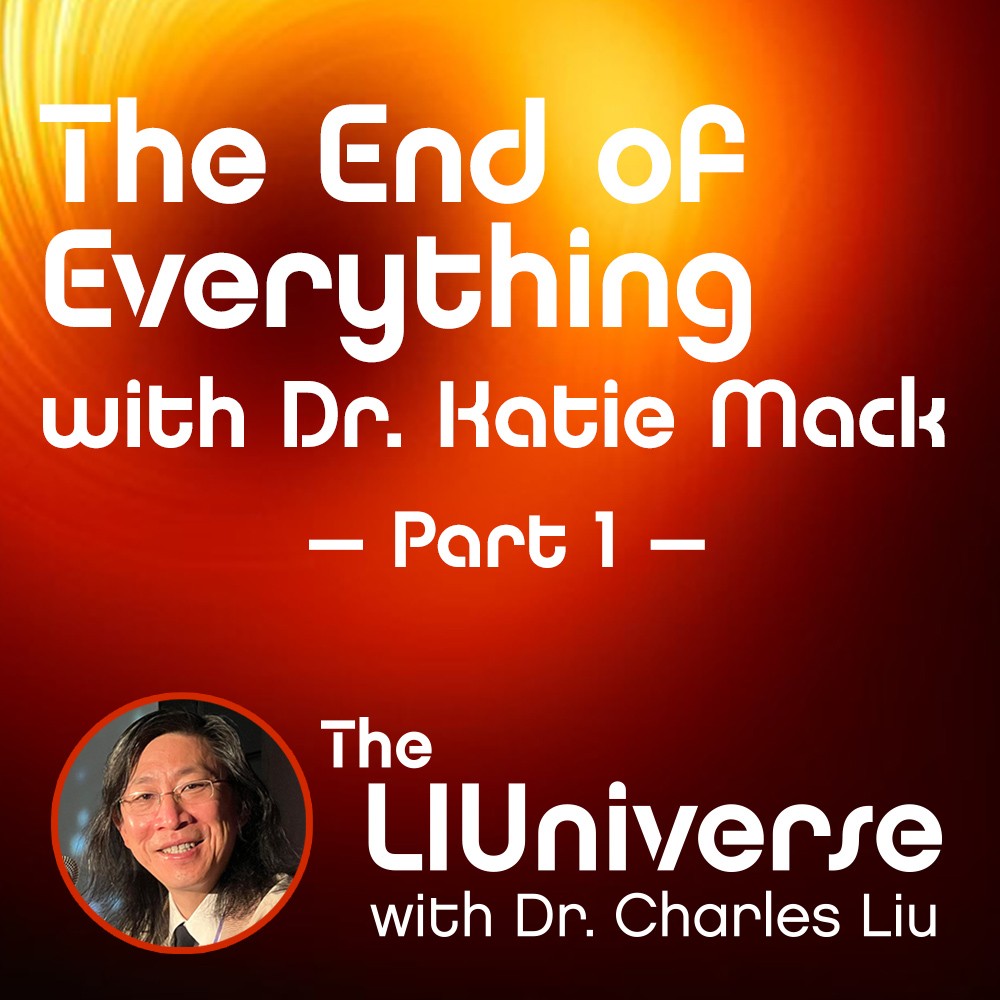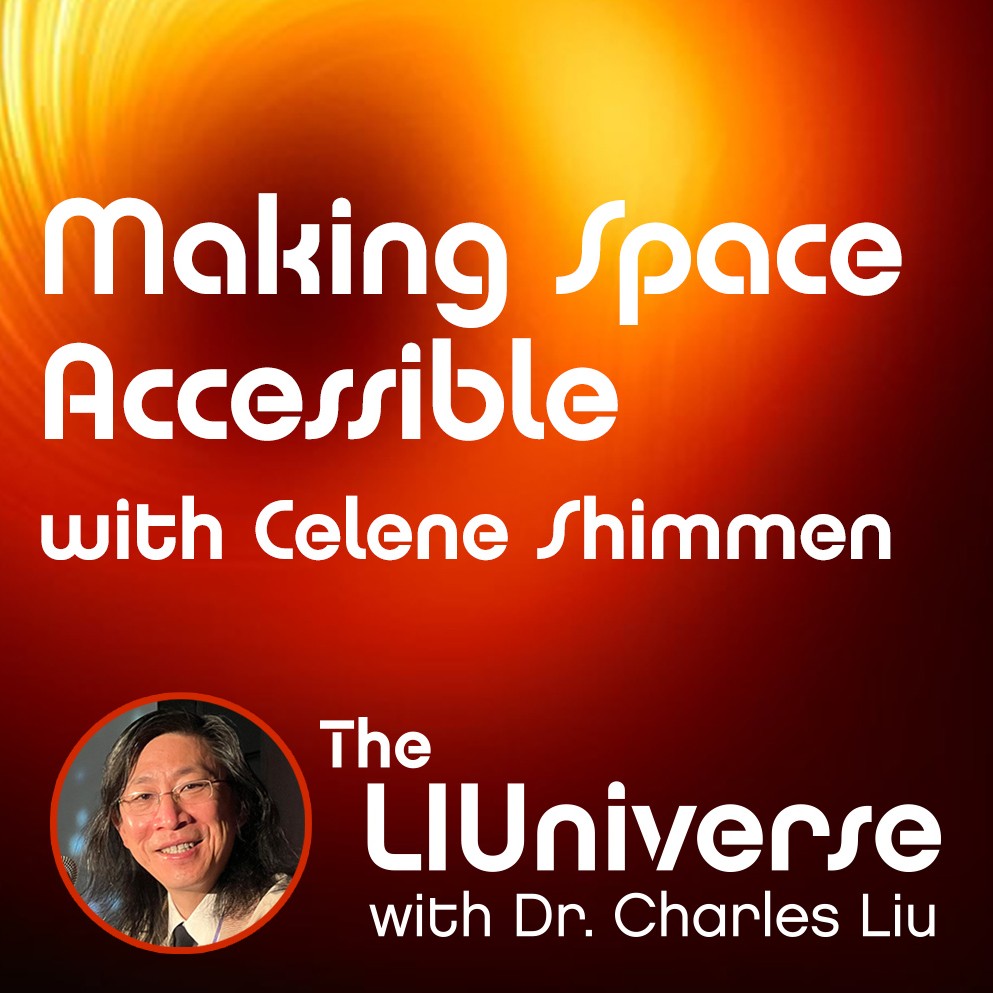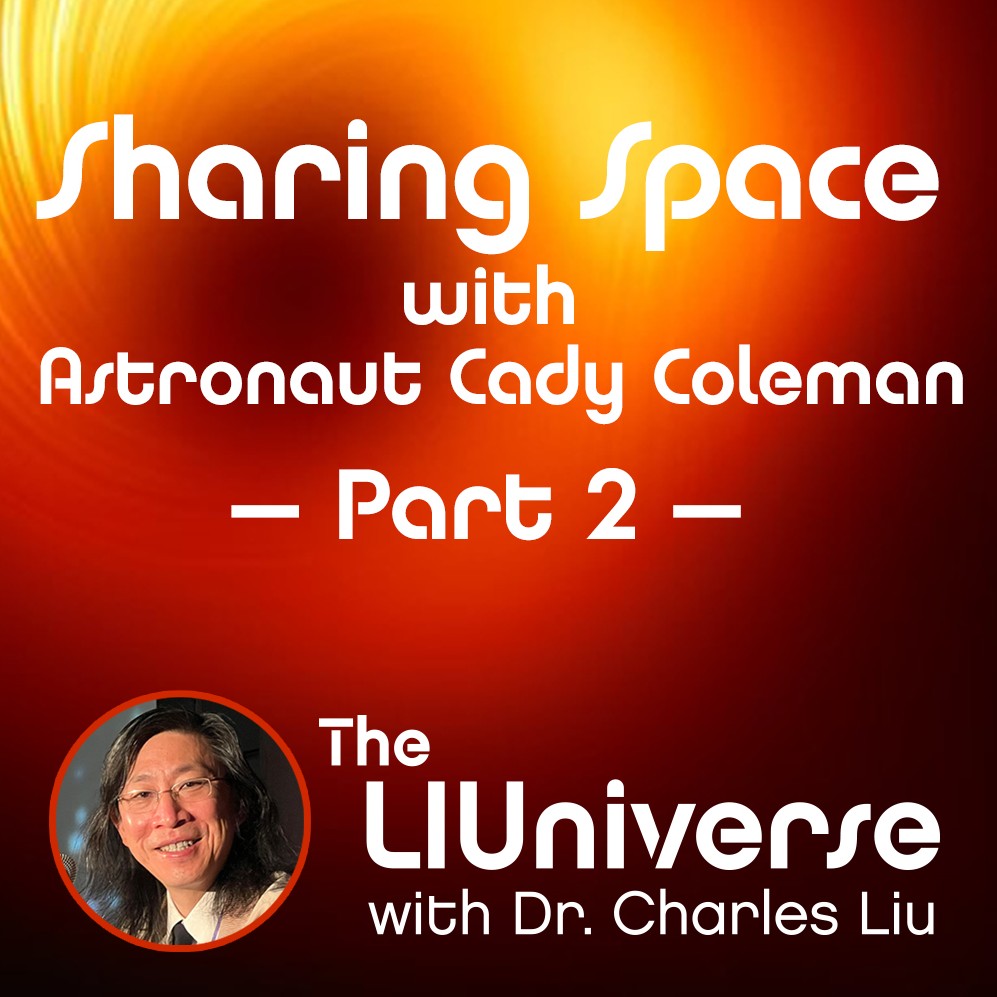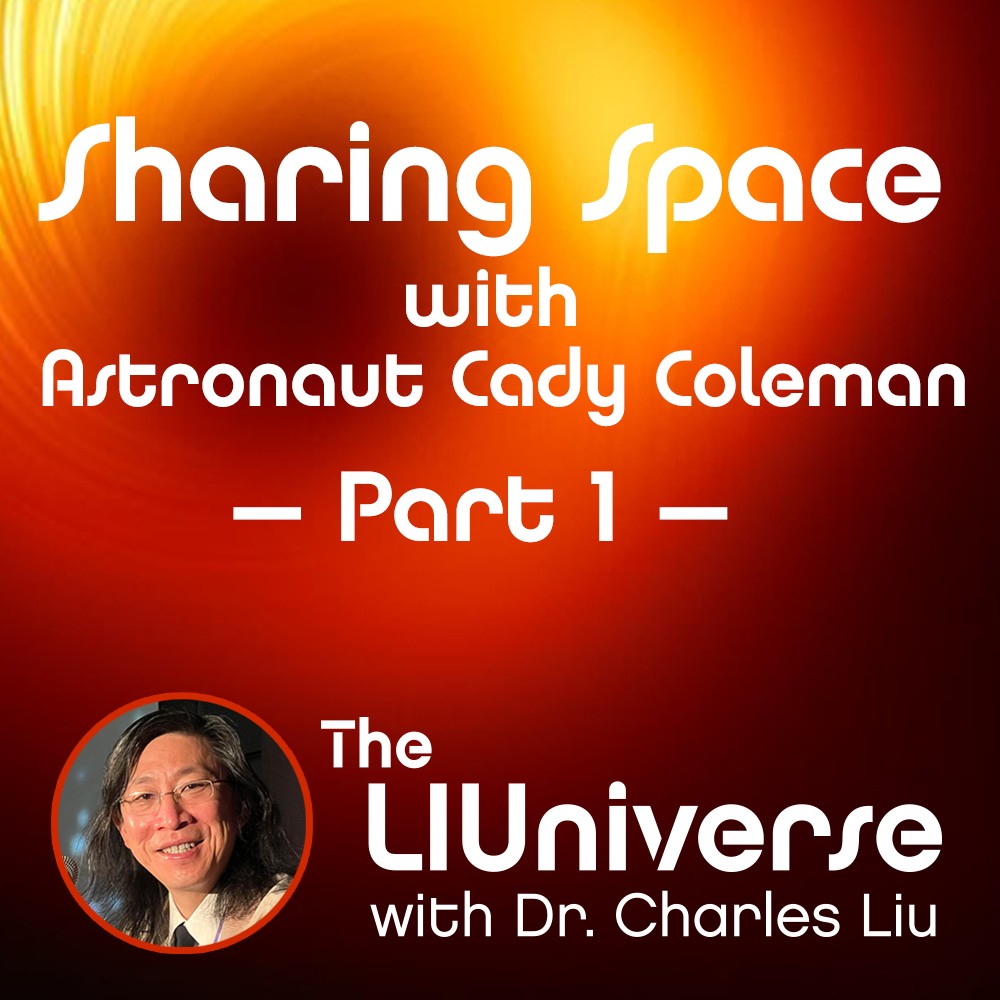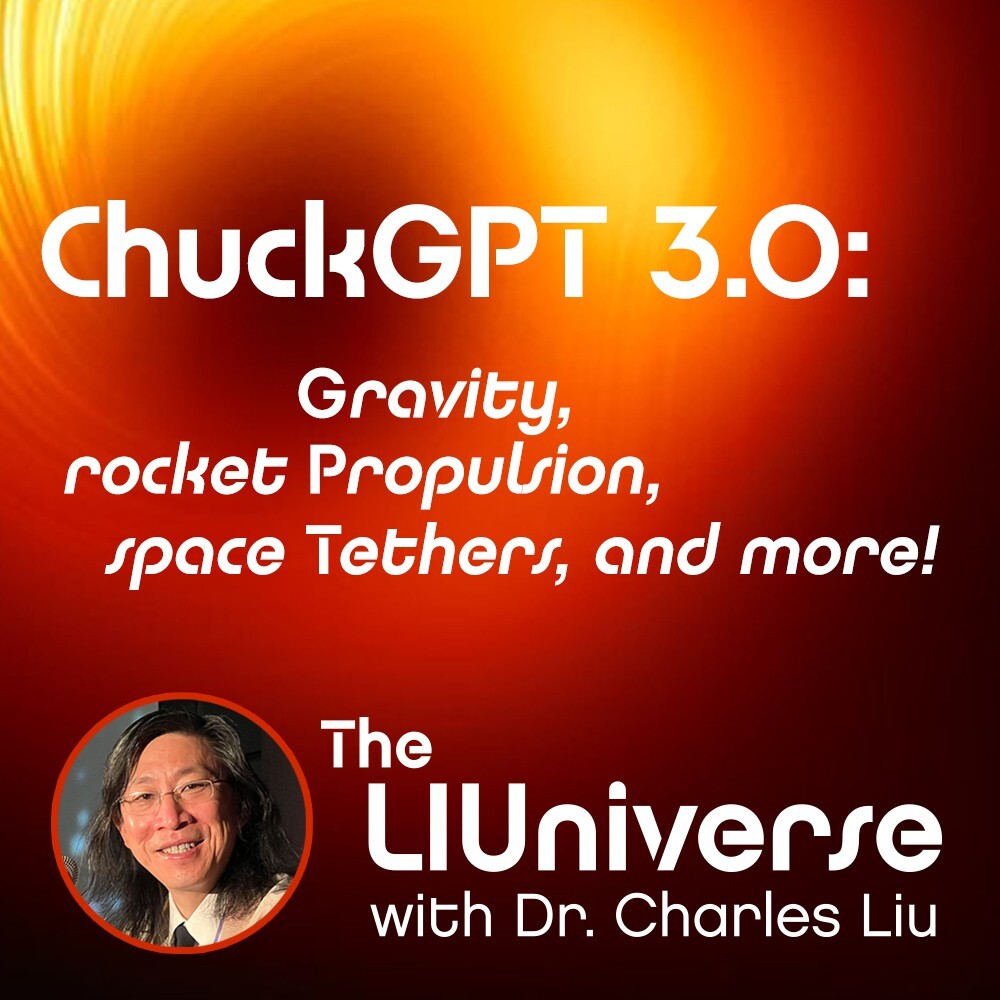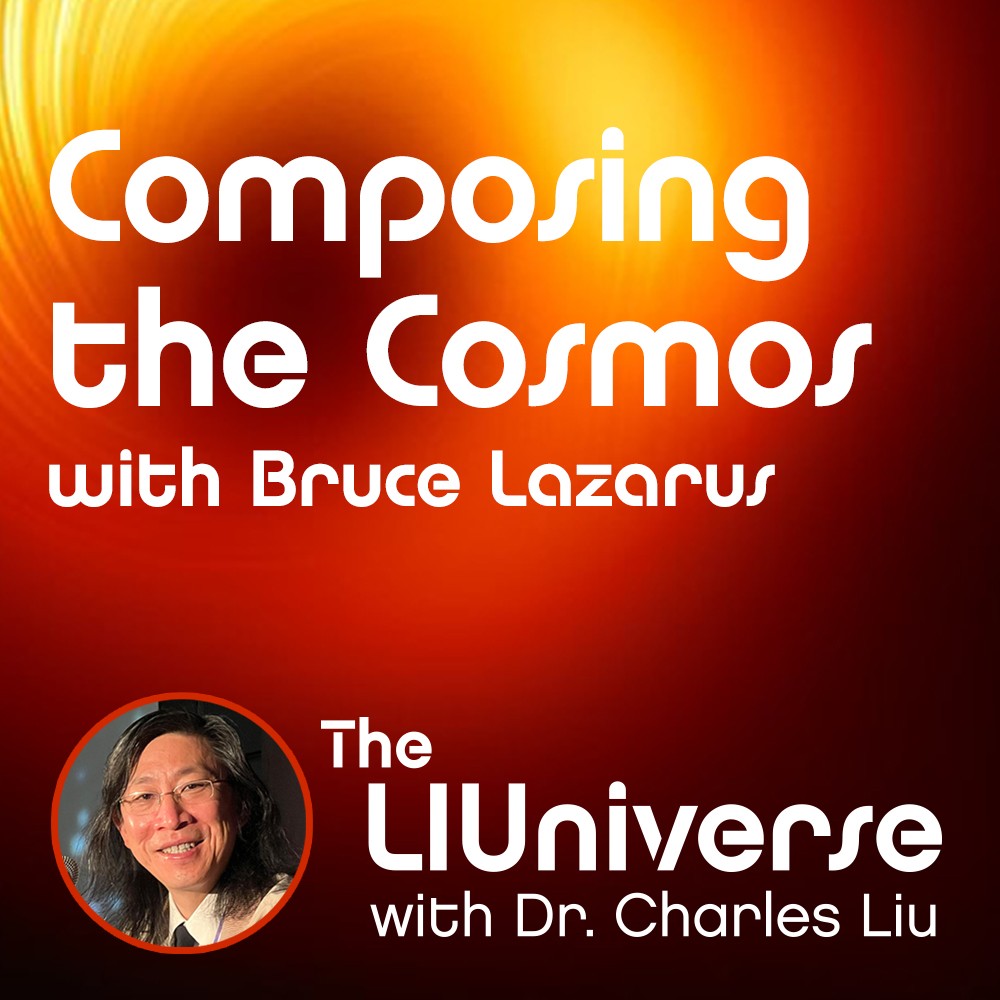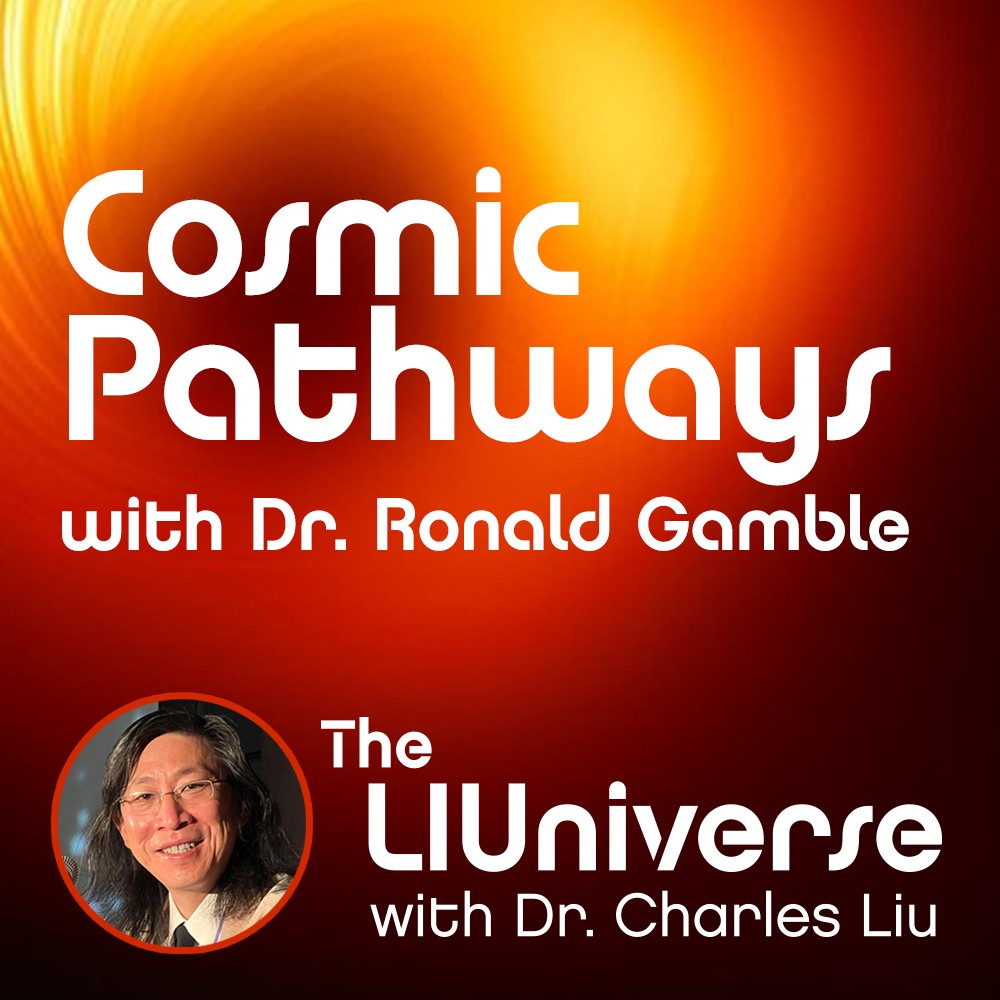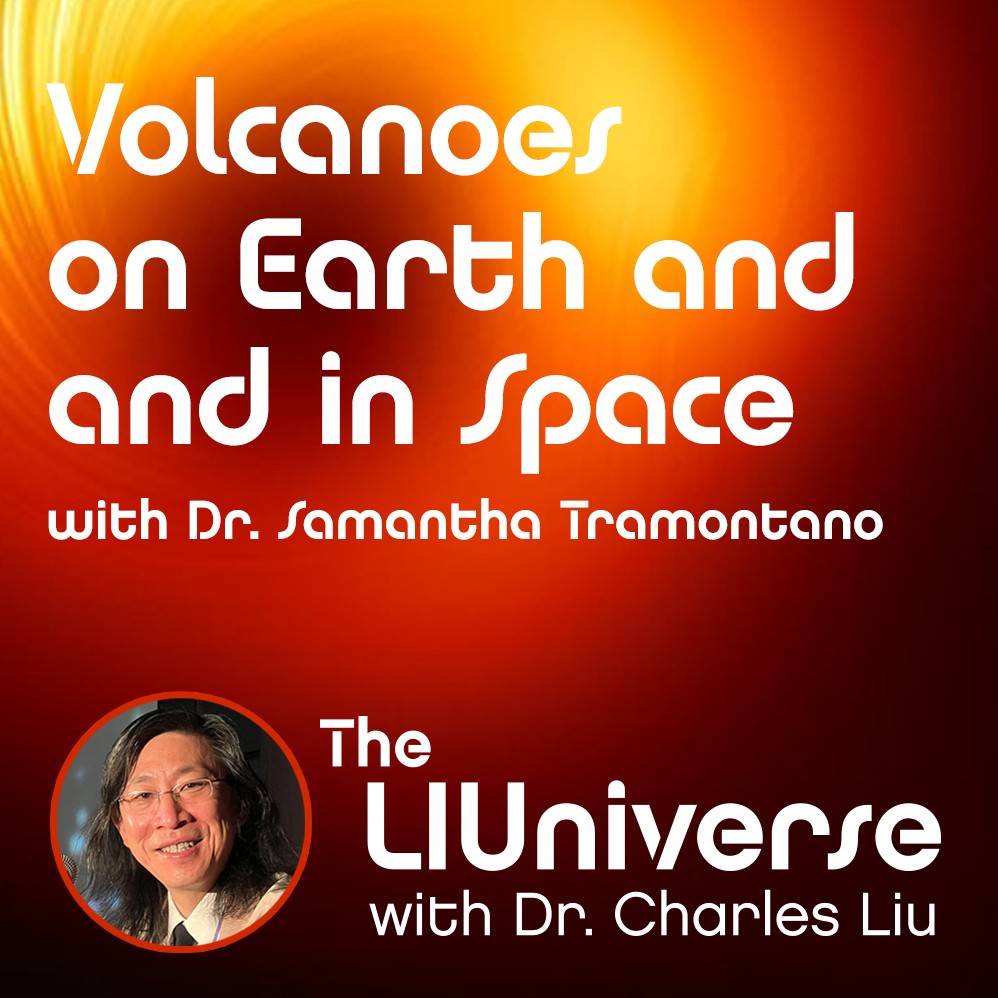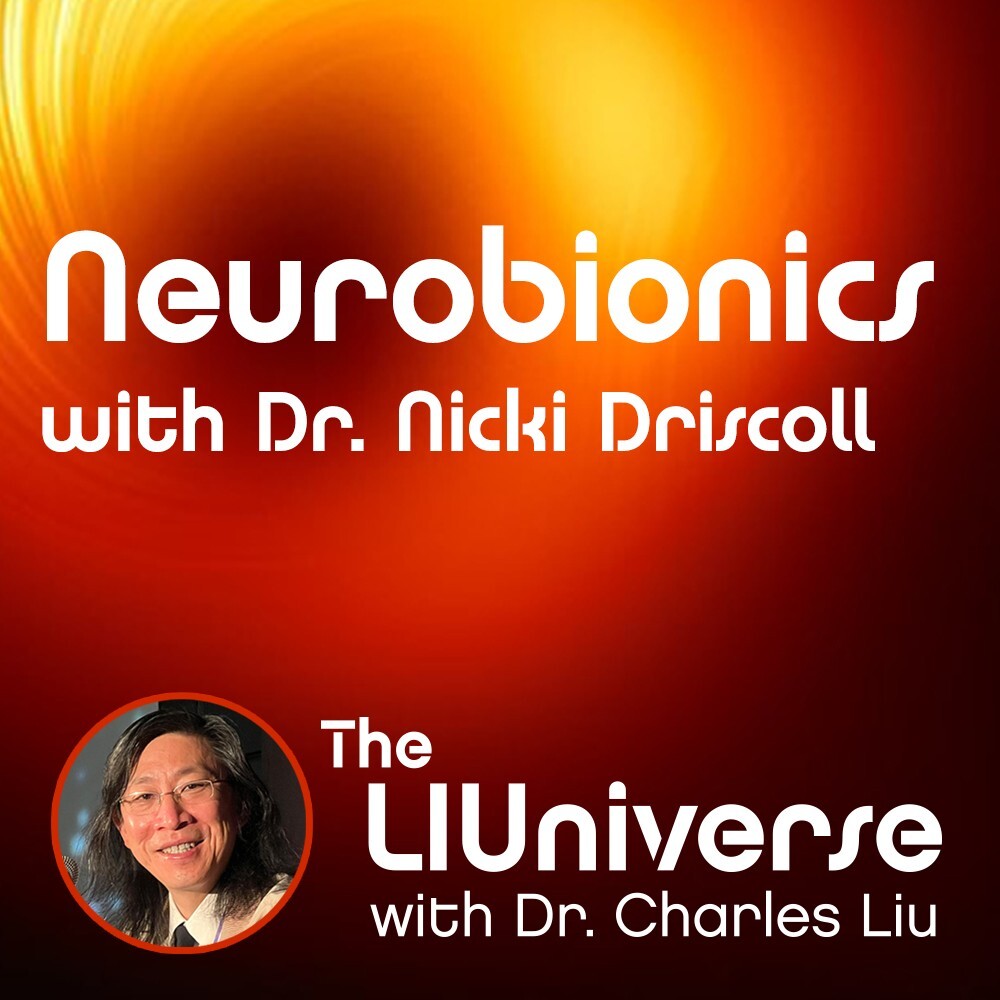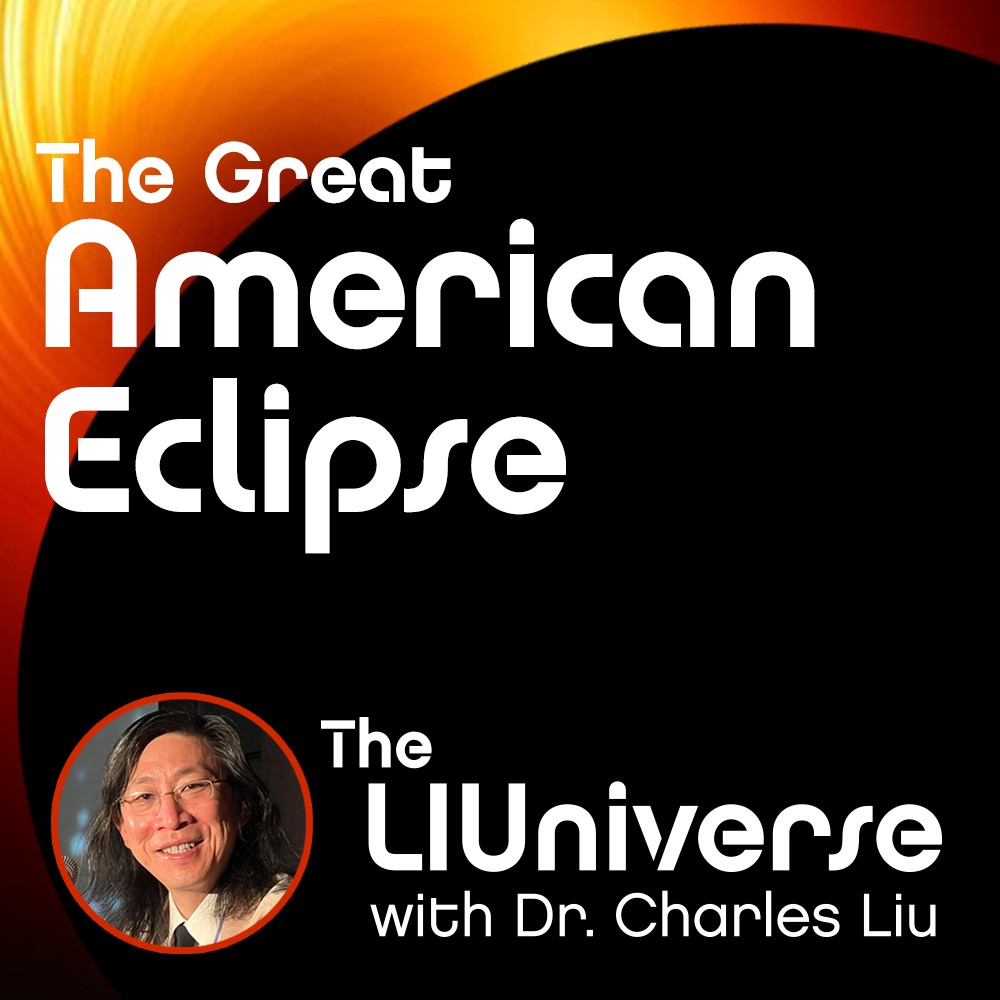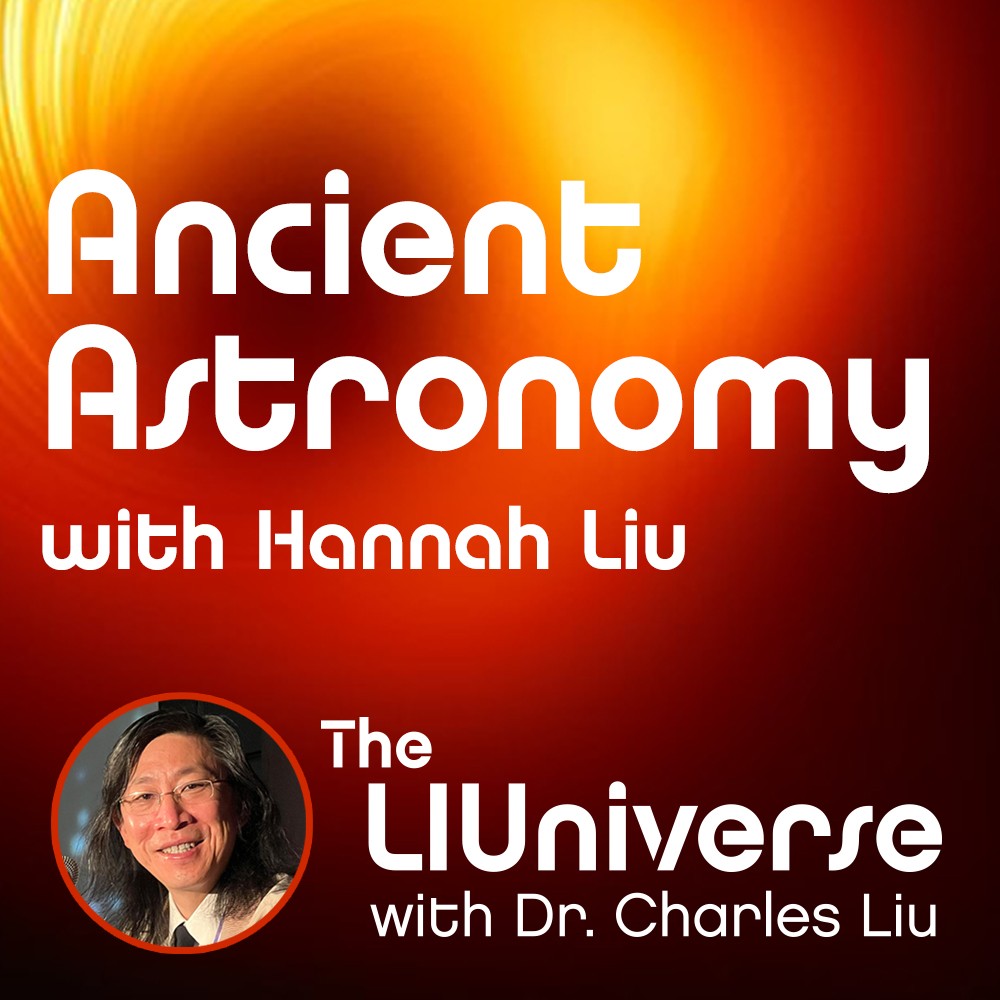Chuck GPT 1.0 Year End Q&A
Description
What happens to one sun of a binary pair if the other goes supernova? Can we mitigate the greenhouse effect? How big should a telescope be? For our Season 2 finale, we’re answering fan questions from YouTube, Instagram, and Facebook. To bring those questions to life, Dr. Charles Liu and co-host Allen Liu welcome two members of the LIUniverse social media team, “Vinyl Benjy” Schoenfeld, our TikTok manager, and Stacey Severn, our Social Media Director.
As always, though, we start off with the season’s final joyfully cool cosmic thing, the most recent image of Uranus by the James Webb Space Telescope. Taken using the JWST’s infrared imaging capabilities, rather than visible light, this incredibly beautiful photo of Uranus clearly shows its 7 spectacular rings and 14 moons.
Now, on to your questions! First, Stacey reads a question from YouTube fan Darker Void Scientist, who asks, “Wouldn’t some violently spinning galaxies produce strong magnetic fields that act as a barrier to some spectrum of traveling waves?”
To answer, Charles gets to discuss the Zeeman Effect and the Parker Instability. He explains that entire galaxies can’t spin fast enough, but that violent spinning does occur and produce magnetic fields closer to the supermassive black holes in the center of those galaxies.
Benjy reads our next question, from YouTube fan Mark Caesar 4443: “When stars go very near black holes and get sling-shotted around them, what would we see of them in terms of time dilation? Surely we would see them slow down as they approach the black hole, of course, that is assuming we can actually observe them.”
Chuck dives into what we would be able to perceive at all, from our perspective, and why we would see color shifts but not necessarily the impact of time dilation that the star itself would experience.
Allen tackles the next question, from Randy Starnes on Facebook, who wants to know whether we could take a rechargeable battery and use it to power a plasma rocket. Our co-host explains that while rechargeable batteries wouldn’t generate enough energy for a plasma engine, lithium-ion rechargeable batteries are used by Rocket Lab for the electric pumps on their reusable Electron rockets.
Stacey next asks another question from YouTube, from @sbkarajan: “How do NASA or anyone measure distance from the planet to the Sun? I heard for Earth they measure the distance to Mars or Venus transit using Keppler’s Third Law. Is it the only way?”
Chuck explains that when humanity was still stuck on Earth, that was the only way. But since we have more tactics at our disposal, from satellites to radar signals, to do far more accurate measurements, even at vast distances.
Next up, @frankwestphal8532 from YouTube: “What would happen to the other star in a supermassive star binary system if one of the stars ‘supernova-ed’ before the other?” It turns out that happens all of the time... and none of the outcomes tend to be good for the other star. But Frank’s not done, and his follow up question about the early universe, binary-system supernovae, and the creation of supermassive black holes is a bit of a chin-scratcher for Chuck!
Stacey’s next question comes via Instagram from our friends CJ Dearinger and Dr. Mounce on the “All Things – Unexplained” podcast: “When will astrophysics encounter/present undeniable proof of a new life form?” Predictions, obstacles, and discussion of alien cryptids ensue.
In another Instagram question, Ben Jordans asks, “How do you perceive the current efforts to mitigate the greenhouse effect? Are you of the opinion that we will succeed in mastering this problem, and if so, how?”
Chuck explains the greenhouse effect, on Earth as well as on Venus and Mars, and the difference between the effect itself and human involvement in it. He and Allen disagree as to how long it might take to redress the problem, while Stacey and Benjy jump in with their more pessimistic concerns about climate change, extreme weather, and the future.
Benjy gets the last question, from @emiliotorres2718 on YouTube: “How do we go about deciding how big we want a telescope to be? Is it simply the bigger the telescope we make, the farther we’ll be able to see into the universe?”
Chuck says the simple answer is yes, but the actual answer is more complicated. To hear it, you’ll have to watch or listen in to the final episode of Season 2 of The LIUniverse!
We hope you enjoy The LIUniverse, and, if so, please support us on Patreon. We’ll return for Season 3 in 2024.
Image Credits:
–Uranus and moons by JWST – NASA, ESA, CSA, STScI, Public Domain
–Time-lapse of stars near Milky Way’s central black hole – ESO/MPE, CC BY 4.0
–Rocket Lab’s Electron rocket – NASA Kennedy Space Center / Rocket Lab, Public Domain
–The Hobby–Eberly Telescope – Zereshk, CC BY 3.0
–3D model of Parker Solar Probe – NASA, Public Domain
–Chandra X-ray Observatory on the Space Shuttle – NASA, Public Domain
–Hubble photo of Saturn in UV light – NASA, Public Domain

